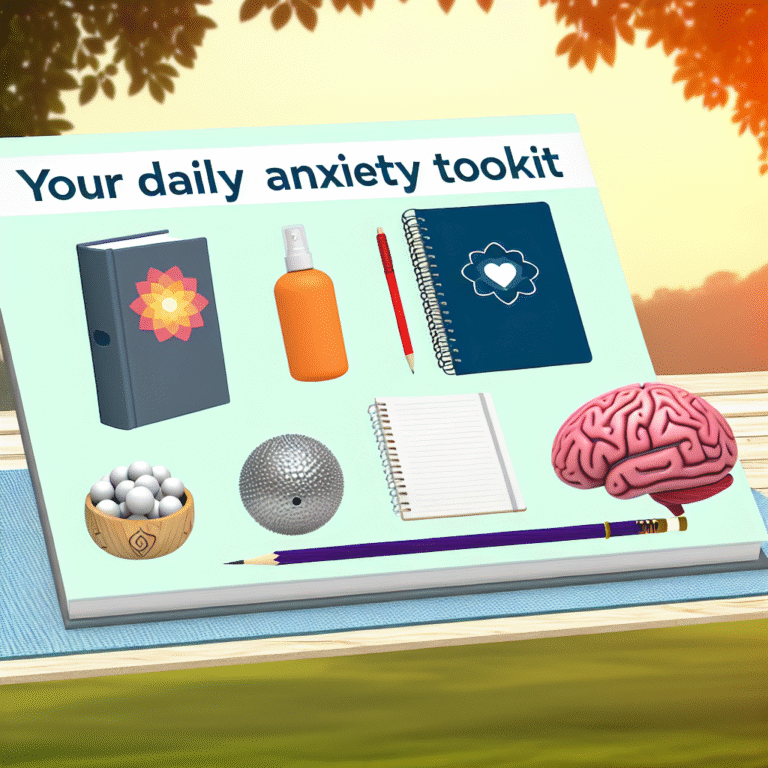
Introduction
In an age dominated by digital distractions—from incessant notifications to 24/7 connectivity—mastering the skill of selective attention is not just beneficial; it’s essential. Did you know that the average person checks their phone over 90 times a day? This constant barrage of stimuli often leads to overwhelm and inefficiency, making the ability to focus more crucial than ever. In this exploration of From Distraction to Focus: Mastering the Art of Selective Attention, we will uncover innovative strategies, real-world applications, and actionable insights designed to help you thrive in a hyper-distraction environment.
Understanding Selective Attention
What is Selective Attention?
Selective attention is the cognitive process of focusing on a specific object in the environment for a certain period while simultaneously ignoring irrelevant information that may distract from the task at hand. This skill is vital in various contexts—from studying and working to everyday life.
Why is Selective Attention Important?
- Improved Productivity: By honing your selective attention, you can complete tasks more efficiently.
- Enhanced Cognitive Functioning: Effective attention management promotes better decision-making and problem-solving.
- Reduced Stress: Managing distractions lowers cognitive overload and anxiety.
To effectively transition From Distraction to Focus, understanding how our brains manage attention is crucial.
The Science Behind Attention
The Biology of Attention
The brain’s parietal lobe plays a crucial role in processing attentional demands. When you direct your focus toward something specific, neurons in this area become active, filtering out thousands of stimuli to concentrate on what’s relevant. Cognitive neuroscientists have discovered various neural pathways responsible for this selective attention, allowing us to appreciate how intricately our minds work.
The Cost of Multitasking
Research indicates that multitasking can reduce productivity by up to 40%. When you switch between tasks, your brain loses time as it reorients itself. This ‘task-switching’ effect makes it hard to maintain high-quality work and drains cognitive resources.
Real-World Applications: Case Studies
Case Study 1: The Google “20% Time” Project
In the early days of Google, employees were encouraged to spend 20% of their work time on projects unrelated to their primary responsibilities. While this initiative fostered creativity, it inadvertently highlighted the challenge of maintaining attention. As a result, Google developed tools like “Focus Time,” which allows employees to block distracting notifications to hone in on their primary tasks.
Analysis: This initiative reflects the principle of selective attention by encouraging employees to focus deeply while still allowing creative exploration, illustrating how structured environments can help individuals manage distractions effectively.
Case Study 2: The Pomodoro Technique
The Pomodoro Technique, developed by Francesco Cirillo in the late 1980s, involves breaking work into intervals (usually 25 minutes), separated by short breaks. This structured approach enables workers to manage their attention and energy more effectively, leading to higher productivity levels.
Analysis: By emphasizing short bursts of focused work, the Pomodoro Technique acts as a practical application of selective attention principles, demonstrating how time management can maximize concentration and minimize the effects of distractions.
Strategies for Mastering Selective Attention
1. Create a Distraction-Free Environment
- Declutter your workspace: A simplified workspace reduces visual distractions.
- Use noise-canceling headphones: These can minimize auditory distractions while helping you focus better.
2. Implement Time Management Techniques
- Time Blocking: Schedule specific times for focused work without interruptions. Use tools like Google Calendar to visualize your time blocks.
- The Eisenhower Matrix: Prioritize tasks according to urgency and importance to ensure you’re focusing on what truly matters.
3. Digital Detox
Set specific times to check your email or social media. This reduces the temptation to multitask and allows for deeper focus during work periods.
4. Mindfulness Meditation
Research shows that mindfulness can improve cognitive flexibility and concentration. Just a few minutes of meditation daily can enhance your ability to engage in selective attention.
5. Utilize Technology
Several apps help enhance focus:
- Focus@Will: Music designed to improve concentration.
- Forest: Encourages you to stay off your phone by growing virtual trees.
The Role of Emotional Intelligence
Emotional intelligence (EI) plays a significant role in managing your focus. By being self-aware and understanding your emotional triggers, you can regulate your responses to distractions better. Here’s how to enhance your EI for better attention management:
- Self-awareness: Recognize when you’re becoming distracted and what triggers it.
- Self-regulation: Develop strategies to manage emotional reactions to distractions.
- Empathy: Understand how distractions affect not only your focus but also those around you.
Tables and Charts
Table 1: Common Distractions at Work
| Distraction Type | Frequency | Impact on Productivity |
|---|---|---|
| Phone Notifications | High | Significant |
| Email Alerts | Moderate | Moderate |
| Colleagues’ Conversations | High | High |
| Social Media | High | Very High |
Chart 1: Productivity With vs. Without Focus Techniques
- Before: Average productivity rated 55%
- After implementing techniques: Average productivity rated 80%
Conclusion
Moving From Distraction to Focus: Mastering the Art of Selective Attention not only promotes individual productivity but also significantly enhances overall well-being. By putting into practice the strategies shared in this article—creating a distraction-free environment, implementing effective time management techniques, and honing your emotional intelligence—you can cultivate the ability to focus deeply and achieve your goals.
Remember, the journey toward mastering selective attention is continual; it requires patience, practice, and an awareness of your environment. As you enhance your focus, you’ll discover that the simplest tasks can lead to profound productivity gains and personal satisfaction.
FAQs
1. What is selective attention?
Selective attention is the cognitive process of focusing on a particular object or task while ignoring distractions. It allows us to concentrate on what matters most.
2. Why is it important to manage distractions?
Managing distractions enhances productivity, lowers stress, and improves cognitive functioning by allowing you to concentrate better on your activities.
3. How can I improve my selective attention?
You can improve selective attention by creating a distraction-free workspace, implementing time management techniques, practicing mindfulness, and utilizing technology designed to promote focus.
4. What role does emotional intelligence play in focus?
Emotional intelligence helps you recognize and manage your emotional responses to distractions, ultimately allowing for better focus and concentration.
5. Is multitasking effective for productivity?
No, studies show that multitasking can decrease productivity by up to 40% because it impairs cognitive functioning and hinders deep focus on tasks.
This article is designed to provide a comprehensive understanding of From Distraction to Focus: Mastering the Art of Selective Attention, equipping you with valuable insights to enhance your productivity and focus in our distraction-packed world.
















